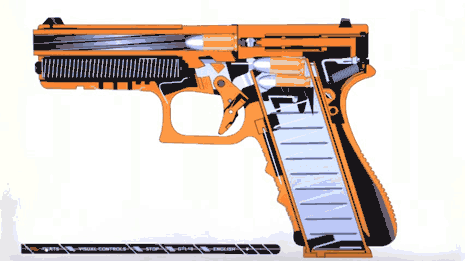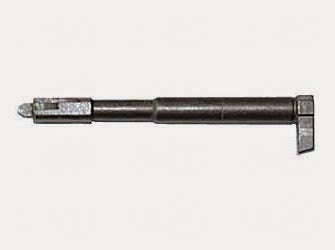T-Test
solid fixture here in the forum

In the world of modern firearms which use centerfire cartridges, there are two major types of mechanisms used to trigger the cartridge primer. One uses a hammer and another uses a striker. Therefore, mechanisms that use a hammer are called hammer-fired and the ones that use a striker are called striker fired. As you can guess, each mechanism has its own group of supporters.
In contrast to this, striker fired systems operate in linear fashion. The striker is a part that is a bit heavier than a firing pin and it is directly connected to a spring. When the firearm is cocked, the striker is moved against a linear spring and held in position. When the trigger is released, the spring forces the striker forward with enough energy to detonate the primer upon impact. The animated image below shows how this works.
The striker is the long part in the back of the gun that looks like this:

It should be noted that the animation example for a striker fired weapon shows the firing mechanism of a Glock pistol. When a Glock is cocked, the striker is moved back and held under partial spring tension by the trigger mechanism and safety devices. As the trigger is pulled, the striker is initially pulled back till the spring reaches full tension and then the striker is released. In other pistol models, such as Springfield XD or Smith & Wesson M&P models, the striker is already held at full spring tension when it is cocked. Pulling the trigger in such firearms merely releases the striker and allows it to fly forward
From the above images, we see that hammer fired mechanisms use a rotational force to detonate the primer, whereas striker fired mechanisms use a linear force to do it.
